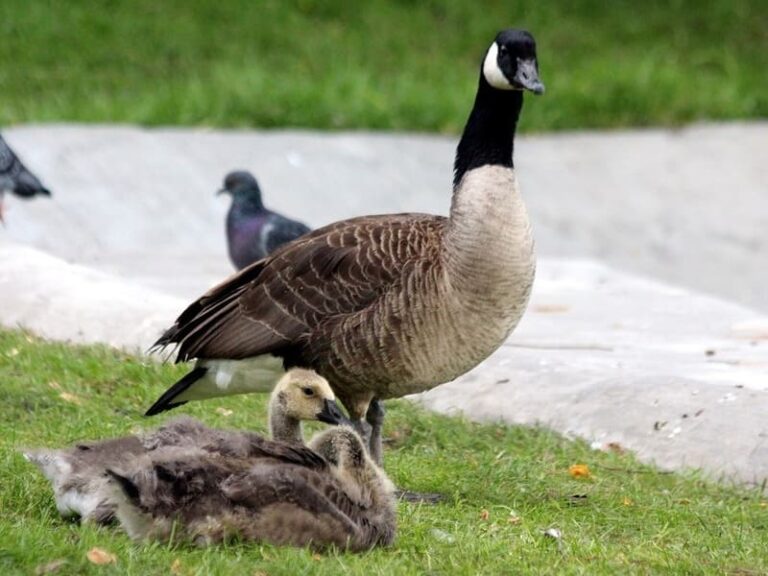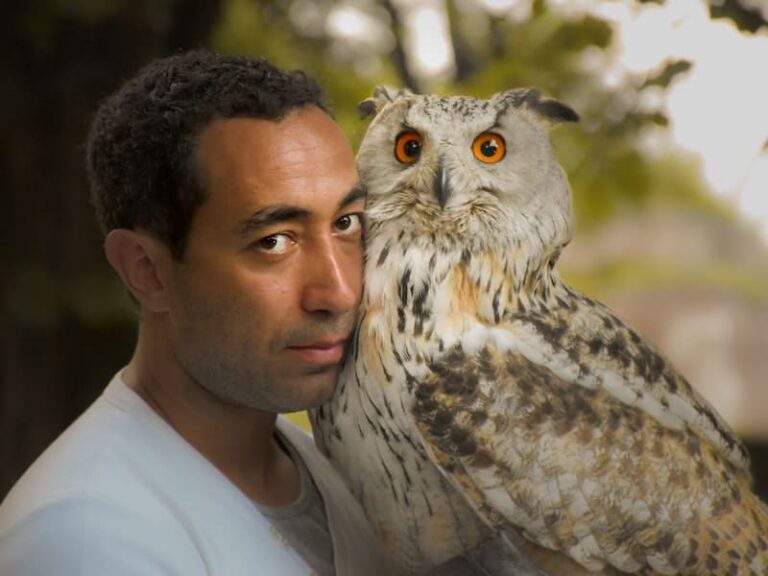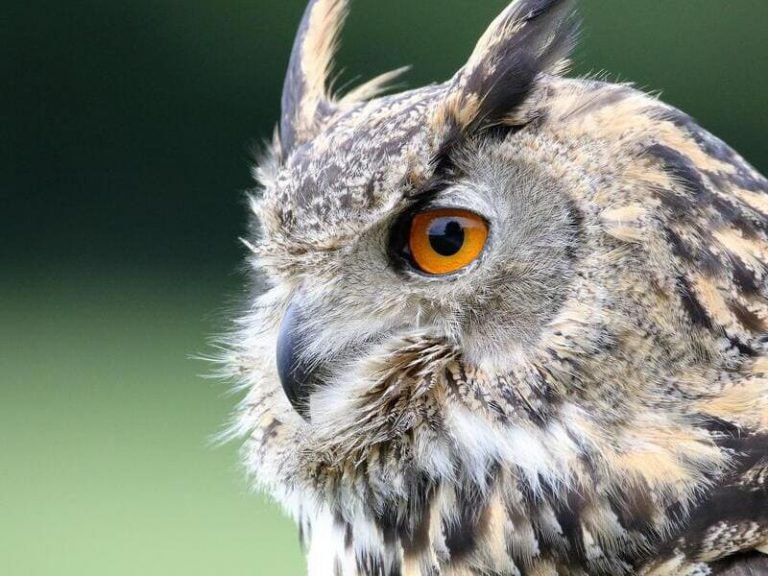Can Turkeys Fly? You Need to Know This
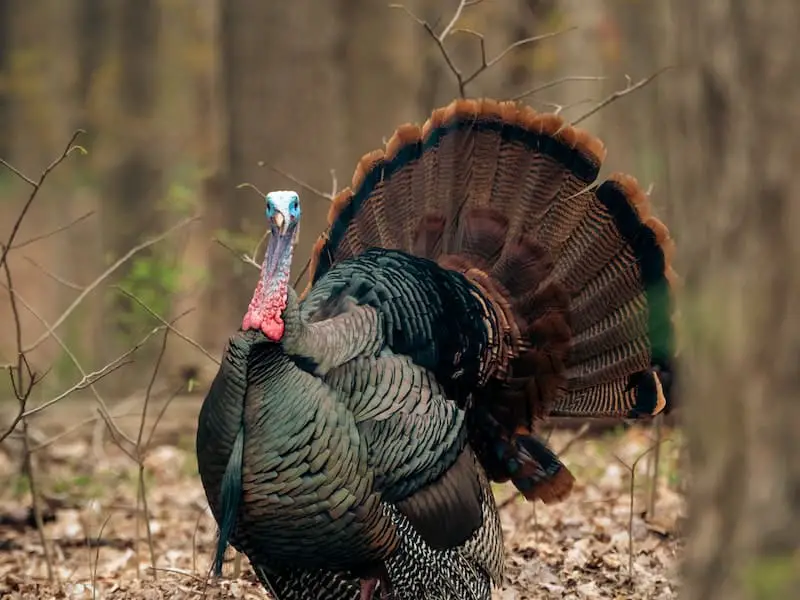
Have you ever seen a Turkey flying? Have you purchased a Turkey but don’t know if it can actually fly? If yes, then this article is for you. For several years, the flying habits of Turkeys have remained a mystery. Can turkeys fly?
This is a question that has been asked by millions of scientists and farmers, but they never got any definitive answer. Some people think that Turkeys can fly, while others believe that they cannot. Well, I’m here to tell you that turkeys CAN indeed fly.
In this blog post, we will explore the scientific evidence that supports this claim and learn more about the amazing abilities of these creatures. Stay tuned because it’s going to be a wild ride.
Can Turkeys Fly?
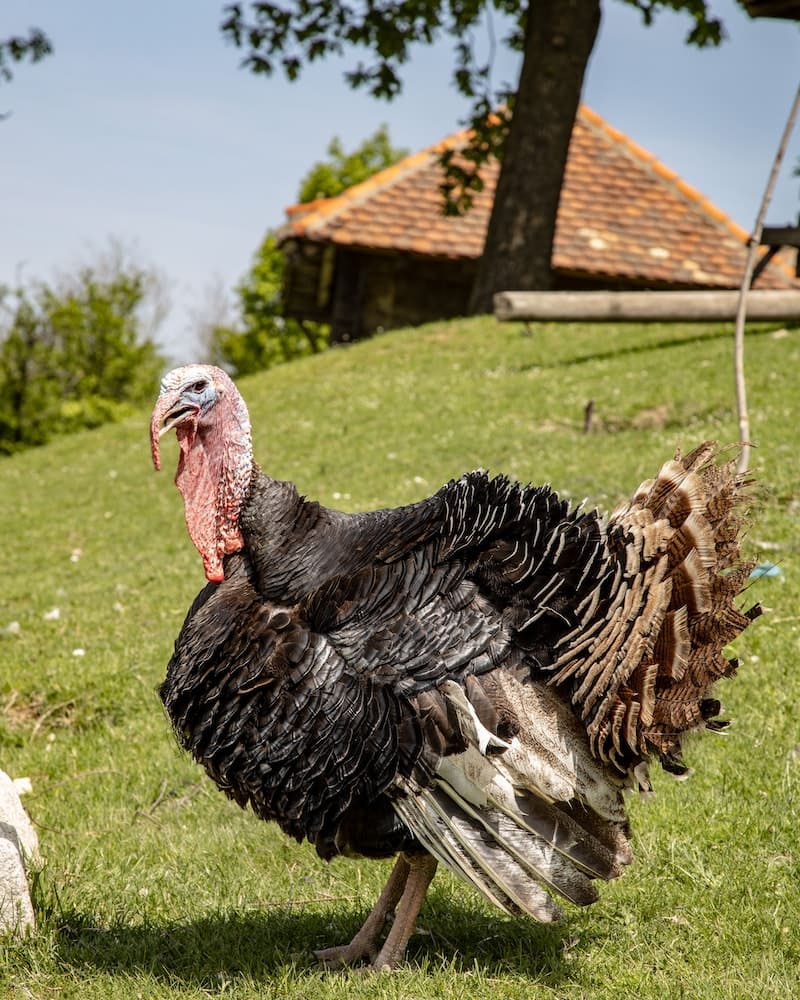
Yes, turkeys can fly. They are not very good at it, however, and typically only fly for short distances. This is because turkeys have a lot of body fat, which makes them heavy and decreases their flying ability. They also have small wings in proportion to their body size, which further hampers their aerial mobility.
Can Wild Turkeys Fly?
Yes, wild turkeys can fly, but they don’t typically do so unless they feel threatened. When startled, wild turkeys will take to the air in an effort to get away from whatever is threatening them. They have been known to fly as high as 1,000 feet in the air and can travel for distances of up to 10 miles.
While their flying abilities aren’t as impressive as those of some other birds, such as hawks or eagles, they are more than capable of getting away from danger when necessary.
Can White Turkeys Fly?
Yes, white turkeys can fly, but they are not as proficient at flying as the darker varieties of turkeys, but they can take to the air if necessary. In fact, white turkeys were originally bred from dark turkeys because farmers found that dark birds were better at flying away from danger.
You will also enjoy reading: 9 Birds that look like Turkey
Other Differences Between Them
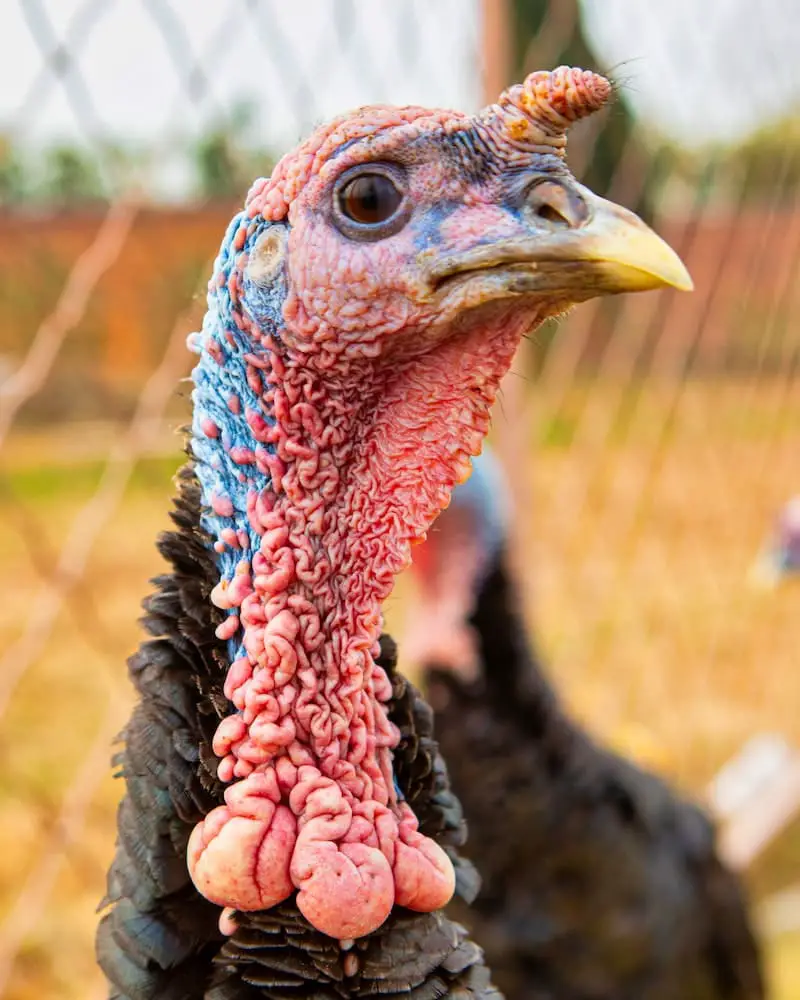
Listed below are a few key differences between white, dark, and wild turkeys.
1 – Plumage Color: The most obvious difference is their plumage color. White turkeys have feathers that are predominantly white, while dark turkeys have feathers that are mostly black and brown. Wild turkeys, as their name suggests, are native to the wild and have a mix of brown, black, and white feathers.
2 – Size: Another difference is their size. White turkeys tend to be smaller than dark or wild turkeys. And finally, the taste of their meat varies depending on the type of turkey. Wild turkey meat is considered to be the best-tasting, followed by dark turkey, with white turkey being the least flavorful.
3 – Origin: White turkeys are the result of selective breeding, which began in the early 1800s. Dark turkeys are the original wild turkey that was first domesticated by Native Americans. Wild turkeys can be found in North America, Central America and South America.
Can turkeys fly in the rain?
Yes. Turkeys can fly in the rain because their wings are covered in waterproof feathers. The primary purpose of a turkey’s wings is not to help them stay in the air, but to help them navigate through trees and brush when they’re foraging for food. From this, we can deduce the answer to our question ‘Can Turkeys fly?’. Of course, they can fly.
Why can’t domestic turkeys fly?
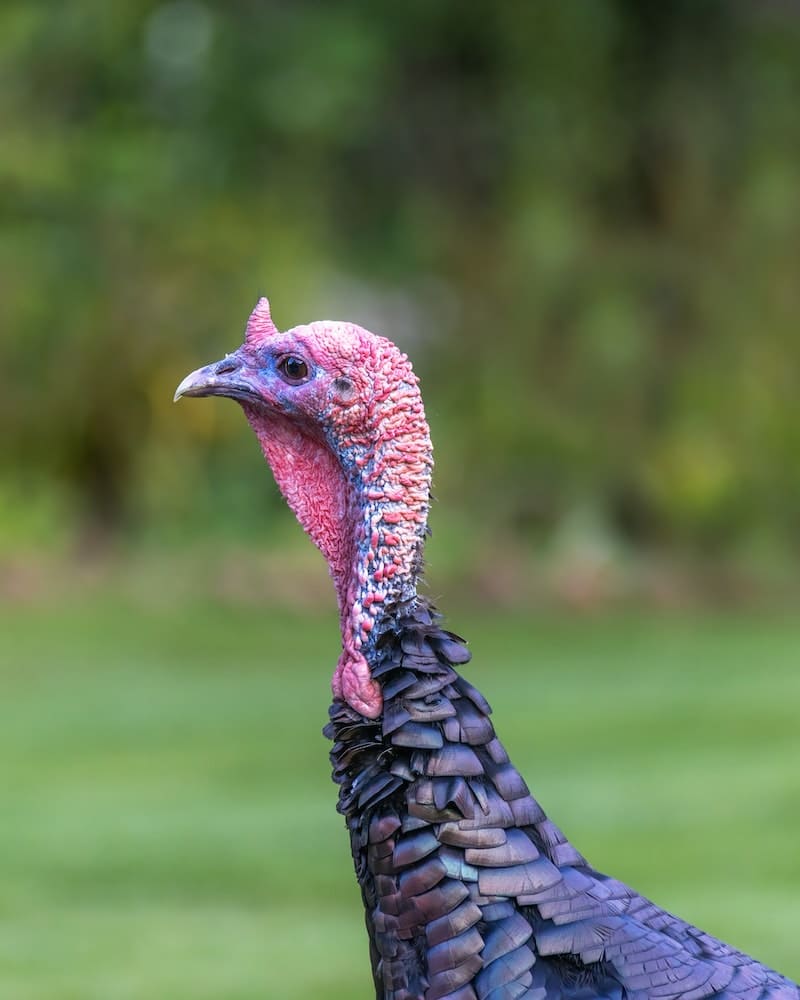
Domestic turkeys can’t fly because they’ve been bred over many generations to have large breasts and wings that are too heavy for them to support in flight.
Wild turkeys, on the other hand, can fly because they’ve evolved to have smaller breasts and wings that are better suited for flying. So it’s not that domestic turkeys can’t fly, it’s just that they don’t have the natural ability to do so because of the way they’ve been bred.
How far can wild turkeys fly?
Wild turkeys typically fly between 500 and 1,000 feet. However, they have been known to fly up to a mile. They prefer to fly low to the ground and use tall trees or power lines for cover. Wild turkeys are very versatile birds and can live in a variety of habitats, including forests, meadows, prairies, and wetlands.
How fast does a wild turkey fly?
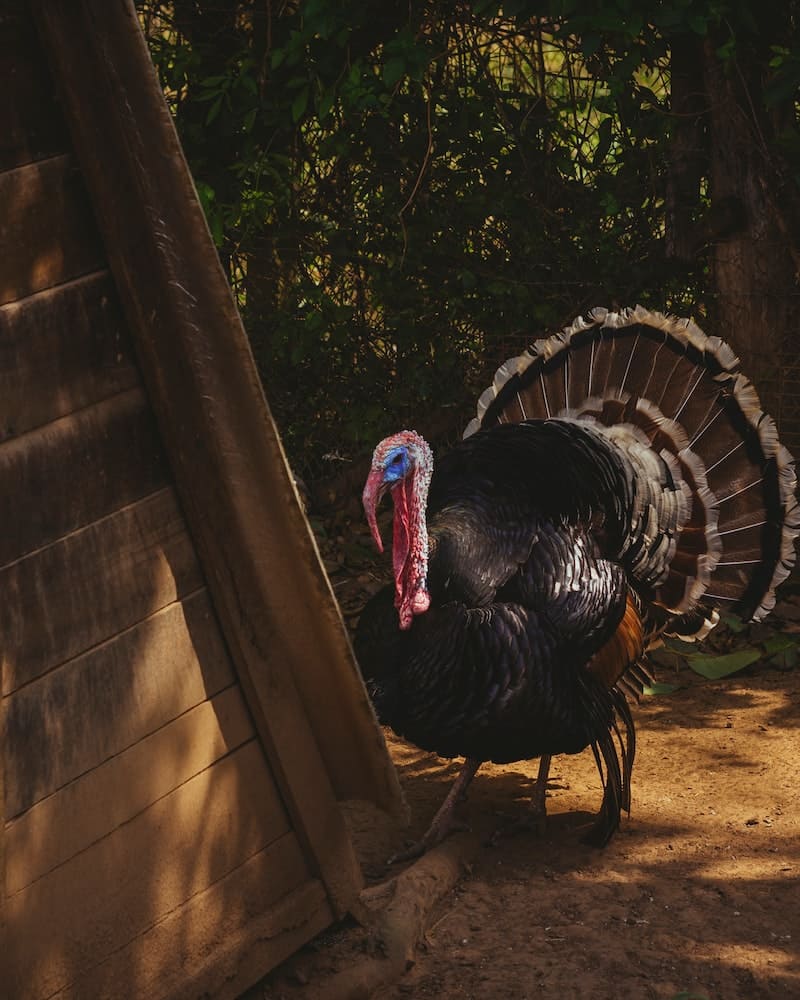
Wild turkeys can fly up to 55 mph. Although they are not as fast as some other birds, such as hawks or eagles, they can still outrun most predators. They usually fly in short bursts to avoid being seen by potential predators and to get from one spot to another more quickly.
How high can wild turkeys fly?
Wild turkeys can fly up to a height of around 400 feet. Their primary mode of flight is short, gliding flights from tree to tree or from one bush to another. They will also flap their wings rapidly when flying low to the ground in order to gain altitude or when being chased by a predator. When flying high in the air, they tend to use the wind currents to help them along.
How high up do wild turkeys roost?
Wild turkeys generally roost in trees, but they will also roost on fence posts, utility poles, and other tall objects. They prefer to roost in a group, and the average flock size is around 12 birds. The highest a wild turkey has been observed roosting is at 18 feet high.
How long can wild turkeys fly?
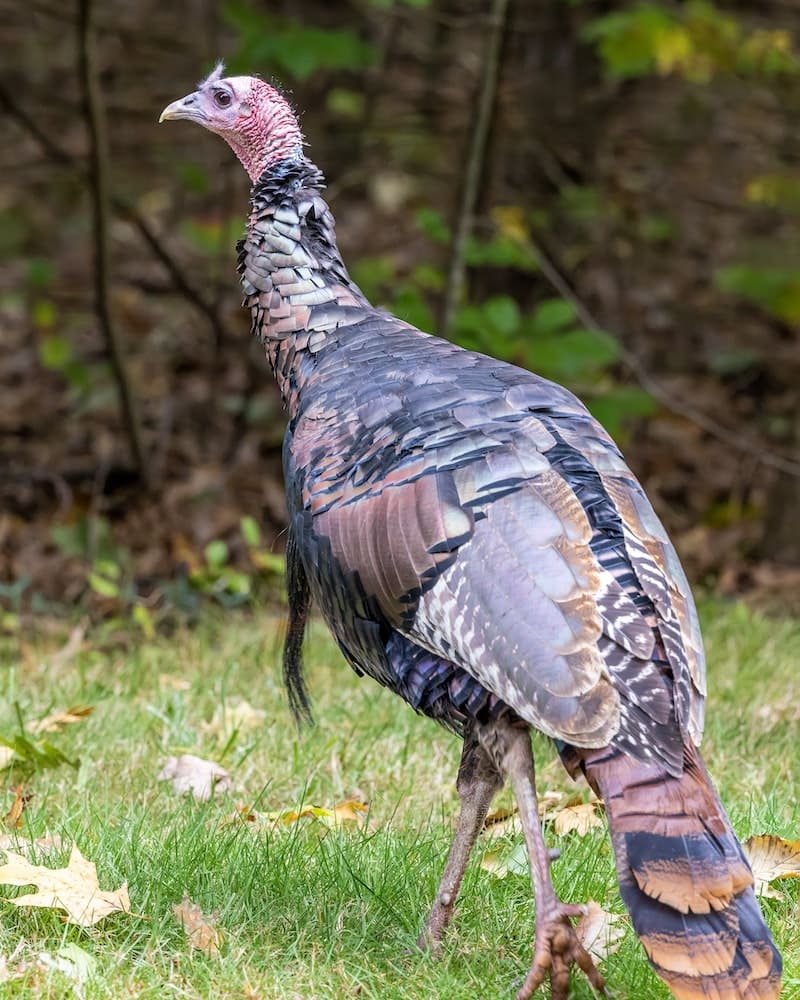
Turkeys are not particularly adept at flight and typically fly only short distances. Most of the time, they’ll walk or run to get where they’re going. They usually take to the air when danger is near or when they need to cross a road or other obstacle.
What age can baby wild turkeys fly from?
Baby wild turkeys can fly from about 3 weeks old. They fledge, or take their first flight, when they are about 17-18 days old. But they won’t be very good at it yet and will probably crash land a lot! They will continue to learn to fly until they are about 6 weeks old. So, now we know that the answer of this mysterious question, ‘Can Turkeys fly?’ is ‘yes’.
Do wild turkeys migrate?
Yes, wild turkeys migrate. They typically migrate in the fall and winter, although there is some variation depending on the specific population of wild turkeys. Some populations migrate as far as 500 miles.
Migrating allows wild turkeys to take advantage of a variety of different habitats depending on the season. In the fall and winter, they’ll move to areas with more dense vegetation where they can find food and shelter. During the spring and summer, they’ll move to areas with more open space so that they can forage for food more easily.
Can wild turkeys swim?
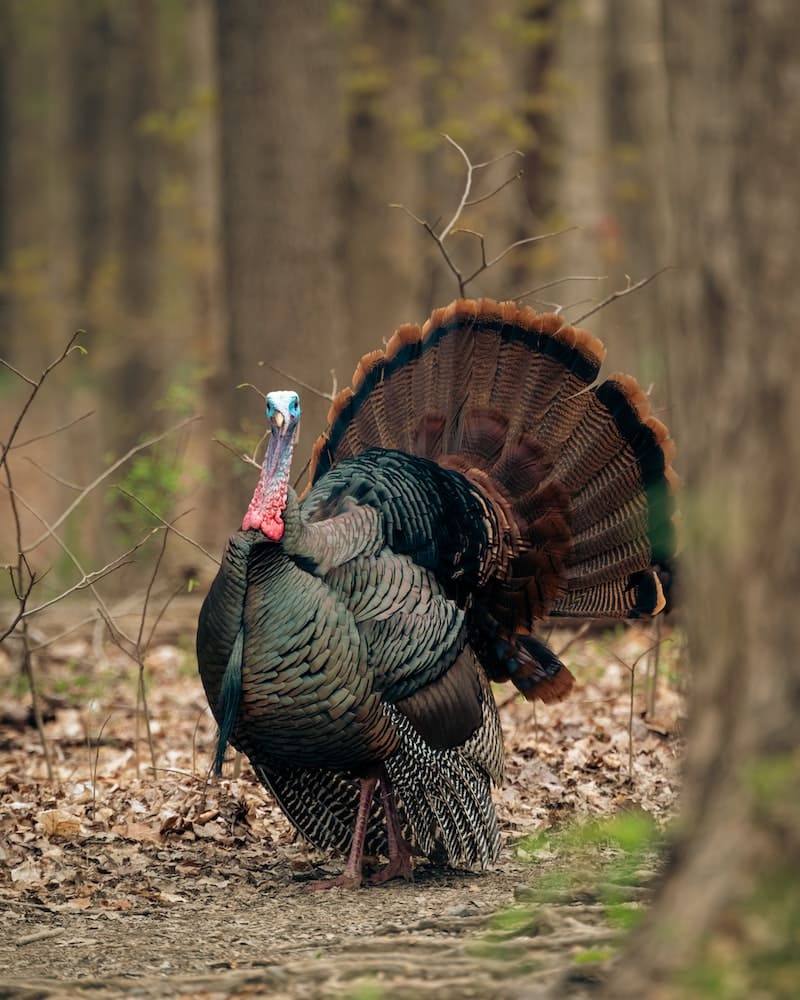
Yes, wild turkeys can swim. In fact, they’re quite good at it. They can even swim long distances. This makes them well-suited to living in wet environments, such as marshes and swamps. They also use swimming as a means of evasion when predators are nearby.
Do wild turkeys sleep in trees?
Yes, wild turkeys often sleep in trees. They roost in trees at night to avoid predators and to stay warm. Turkeys are very adept at climbing and can perch on the tiniest branches. They also like to roost near water so they can quickly get to the safety of the water if they see a predator.
Can wild turkeys fly well?
Wild turkeys can fly, but they typically don’t fly very high or very far. Their flights are short and low to the ground, and they generally only fly when they need to get away from danger. They use their wings for both flying and for gliding, and can stay in the air for up to 10 minutes.
Can baby turkeys fly?
Baby turkeys can’t fly, but they can walk and run pretty well. They start flying around 3 weeks old. Baby turkeys learn how to walk and run quickly, and they also start scratching and pecking at the ground for food around two weeks of age. They are also curious and playful, and will often follow their mothers around. If you’re still wondering about the answer of ‘Can Turkeys fly?’ then we must tell you that ‘YES’, they can.
What is wingspan of wild Turkey?
The wingspan of a wild turkey can range from 3-5 feet. Turkeys evolved to have long wingspans as a way to escape predators. Their long wings also make them great aerial foragers, allowing them to reach food sources high in the trees. To know the answer of ‘Can Turkeys fly?’, read the 1st heading of this article.
How long can a wild turkey stay airborne?
Wild turkeys can stay airborne for about 10 seconds by flapping their wings rapidly. In order to fly, they first have to run quickly to build up enough speed to take off. They then flap their wings as fast as they can to keep themselves in the air. Once they’ve used up all of their energy, they will plummet back down to the ground.
What do wild turkeys like better: flying or running?
Most wild turkeys prefer to fly, but they will run if they need to. The reason they usually fly is because it’s faster and uses less energy. When they run, their speed can vary depending on the terrain and how much prey they’re pursuing. In open areas, they can reach speeds of up to 25 mph, but in dense forests or swamps, their top speed is about half that.
Conclusion
Although we often take for granted that turkeys can’t fly, the truth is far more complicated. It’s true that some wild turkeys can’t fly for long distances, but they are excellent flyers and can reach speeds of up to 55 miles per hour. We hope by now you know the answer to ‘ Can Turkeys fly?’
So next time you see a turkey strutting around, remember that it has the capability to soar through the air like any other bird. Who knows, maybe one day we’ll see them flying in formation alongside the Thanksgiving Day parade balloons.
Interesting articles:



